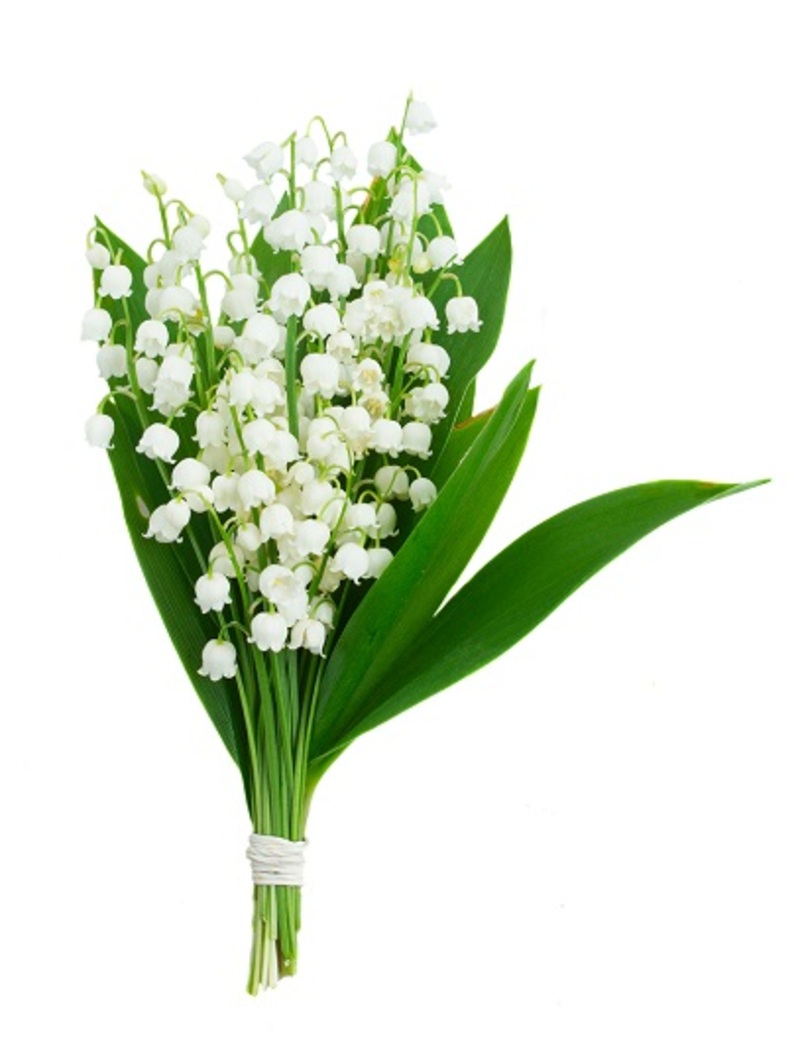Achieve Vibrant Blooms with Proper Hydrangea Care Strategies
Posted on 13/08/2025
Achieve Vibrant Blooms with Proper Hydrangea Care Strategies
Hydrangeas are beloved in gardens worldwide, cherished for their large, colorful blooms and lush green foliage. However, getting the most vivid blossoms isn't just about planting and waiting. With the right hydrangea care strategies, anyone can transform their landscape into a true spectacle of brilliant, show-stopping flowers. In this comprehensive guide, learn how to achieve vibrant blooms with proper hydrangea care. From soil preparation to pruning techniques, uncover everything you need for healthy, flourishing hydrangea plants.
Why Are Hydrangeas a Garden Favorite?
Hydrangeas offer a unique charm in gardens due to their bold flower clusters and a palette of colors ranging from soft pastels to deep blues and pinks. Their versatility allows them to thrive in various climates and garden settings--from containers to borders and woodland spaces. With the right hydrangea care practices, gardeners can influence both the intensity and shade of blooms, making hydrangeas a dynamic and rewarding plant to nurture.

Understanding Hydrangea Varieties
Before diving into the specifics of hydrangea blooming strategies, it's crucial to understand the different hydrangea types. Each variety responds differently to care and environmental conditions:
- Bigleaf Hydrangeas (Hydrangea macrophylla) - Known for their dramatic pink or blue flowers, heavily influenced by soil pH.
- Panicled Hydrangeas (Hydrangea paniculata) - Hardy and sun-tolerant, boasting conical bloom clusters.
- Oakleaf Hydrangeas (Hydrangea quercifolia) - Feature white panicles and unique, oak-like leaves that turn red in fall.
- Smooth Hydrangeas (Hydrangea arborescens) - Typically bloom in white or green, valued for reliability and adaptability.
- Mountain Hydrangeas (Hydrangea serrata) - More compact, with lacecap flowers and similar care needs to bigleaf types.
Knowing which hydrangea species you're growing is essential for applying the most effective hydrangea blooming tips.
Optimal Hydrangea Planting: Setting the Stage for Success
Choosing the Perfect Location
Generally, hydrangeas prefer a spot with morning sun and afternoon shade. Too much sun can cause leaf scorch, while too little light can hinder bloom development. Evaluate the sun and shade dynamics in your garden to find a balance--especially in hotter climates.
Soil Matters: The Foundation of Vibrant Hydrangea Blooms
A key hydrangea care strategy is ensuring soil quality. Hydrangeas thrive in well-draining, fertile soil rich in organic matter. If your soil is heavy clay or sand, amend it with compost and peat moss. Maintaining consistent moisture levels is critical as soggy conditions promote root rot while dryness limits bloom potential.
- Test your soil pH: Knowing the pH helps determine whether your hydrangea blooms will be blue, pink, or purple (for bigleaf varieties).
- Slightly acidic to neutral soil (pH 5.5 to 7) is ideal for most hydrangeas.
- Mulch generously--apply 2-3 inches around the base to retain moisture and regulate temperature.
Watering Hydrangeas for Maximum Bloom Potential
Consistent watering is paramount in almost every hydrangea care regimen. Hydrangeas need more water during their blooming season--late spring through summer.
- Water deeply once or twice per week to encourage deep root growth.
- Morning watering prevents leaf scorch and fungal diseases.
- Avoid watering the foliage; always water at the soil level to reduce disease risk.
In containers, hydrangeas may need daily checks, especially in hot weather. Using drip irrigation or soaker hoses can simplify consistent watering and further promote lush, colorful hydrangea flowers.
Fertilizing Hydrangeas: Nourishing for Spectacular Color and Health
One of the secrets behind vivid hydrangea blooms is well-timed fertilization. Like most flowering shrubs, hydrangeas prefer balanced, slow-release fertilizers.
- Apply fertilizer in early spring when new growth emerges.
- Reapply after the first wave of blooms for reblooming varieties.
- Avoid over-fertilizing; too much nitrogen may promote leafy growth at the expense of flowers.
- Choose fertilizer based on your soil test:
- Use a phosphorus-rich mix (middle number higher, e.g., 10-30-10) for better blooms.
- For bigleaf hydrangeas, aluminum sulfate can turn flowers blue; garden lime encourages pink blooms.
Proper fertilization is a cornerstone of vibrant hydrangea bloom care and ensures a robust display throughout the growing season.
Pruning Hydrangeas the Right Way
Pruning hydrangeas can seem daunting, but it's one of the most effective hydrangea care strategies for both health and prolific blooming. However, not all hydrangea types require the same approach.
When to Prune
- Bigleaf and Mountain Hydrangeas: Prune immediately after flowering in summer, as they bloom on old wood.
- Panicled and Smooth Hydrangeas: Prune in late winter or early spring as they flower on new growth.
- Oakleaf Hydrangeas: Rarely need heavy pruning--trim lightly after blooming.
How to Prune Hydrangeas for Fuller Blooms
- Remove dead, damaged, or crossing stems at their base.
- Thin out older stems to improve air circulation and light penetration.
- For reblooming varieties, deadhead spent flowers to encourage continual flowering.
- Always use clean, sharp pruners to prevent the spread of disease.
Correct pruning practices are vital for abundant, vibrant hydrangea flowers year after year!
Managing Soil pH for Hydrangea Color and Health
Did you know you can control the color of your hydrangea blooms (mainly bigleaf and mountain types) by adjusting soil pH?
- Acidic soils (pH below 6) yield blue flowers.
- Alkaline soils (pH above 7) result in pink blooms.
- Neutral pH often creates lavender or purple hues.
Here's how to influence bloom color as part of your hydrangea care strategies:
- Add aluminum sulfate to soil for blues (follow label for rates).
- Mix in garden lime to turn flowers pink (avoid overdoing it to prevent plant health issues).
- Check and adjust pH annually for consistent color.
Note: Some hydrangea types (e.g., paniculata and arborescens) are not affected by soil pH.
Pest and Disease Management for Healthy Hydrangeas
Healthy plants are vital for abundant hydrangea blooms. Common issues impacting hydrangeas include:
- Powdery mildew and leaf spot: Improve airflow, water at soil level, avoid overhead watering.
- Aphids, spider mites, and slugs: Inspect foliage, handpick pests, use insecticidal soap if needed.
- Root rot: Ensure well-draining soil and avoid overwatering.
A regular inspection routine and swift action against issues are essential components of any successful hydrangea care plan.
Seasonal Hydrangea Care: What to Do All Year
Spring
- Feed with balanced fertilizer as new growth begins.
- Mulch to conserve moisture and suppress weeds.
- Prune as needed (according to variety).
Summer
- Water deeply and regularly, especially during dry spells.
- Deadhead spent flowers for rebloomers.
- Monitor for pests and disease.
Autumn
- Enjoy late-season color from leaves and blooms.
- Reduce watering as temperatures drop.
- Apply light mulch for winter protection.
Winter
- Protect plants in colder regions with extra mulch or burlap wraps.
- Refrain from pruning until the proper season for your hydrangea type.
Additional Hydrangea Blooming Tips for Success
- Spacing is key: Hydrangeas need room for air circulation, reducing fungal issues and promoting larger blooms.
- Be patient: Newly planted hydrangeas may take a season or two to establish and flower abundantly.
- Observe and adjust: Watch your plants and tweak sunlight, water, or nutrition as needed for the best results.

Hydrangea Care FAQ: Your Top Questions Answered
Why won't my hydrangeas bloom?
Common reasons include improper pruning, insufficient light, late spring frost damage, or fertilizer imbalance. Review your hydrangea care practices to identify potential issues.
How often should I fertilize?
Typically, once in early spring and again after the first bloom is sufficient for most hydrangeas. Avoid late summer fertilization as it can spur tender growth prone to winter damage.
Do hydrangeas need to be deadheaded?
Deadheading isn't required for all types but can encourage repeat blooms in reblooming varieties and generally improves plant appearance.
Can I grow hydrangeas in containers?
Absolutely! Use a large, well-drained container and position in dappled sunlight. Potted hydrangeas need more frequent watering and may require winter protection.
Conclusion: Your Roadmap to Vibrant Hydrangea Blooms
Achieving vibrant hydrangea flowers is within every gardener's reach with the right care, attention, and a little patience. By mastering these well-proven hydrangea care strategies--choosing the right location, balancing soil pH, watering consistently, fertilizing wisely, and pruning correctly--you'll enjoy healthy plants and a bounty of showy blooms year after year. Whether you're a beginner or seasoned gardener, these hydrangea care tips will ensure your hydrangeas are the centerpiece of any landscape.
Ready to create your dream hydrangea garden? Follow the steps above and watch as your efforts blossom into a garden filled with lively, radiant hydrangea blooms!
Latest Posts
12 Flowers Renowned for Their Longevity and Beauty
Explore the Fascinating World of Tulips: 7 Facts to Know
The Captivating Allure of Red Roses on Valentine's Day
Achieve Vibrant Blooms with Proper Hydrangea Care Strategies





